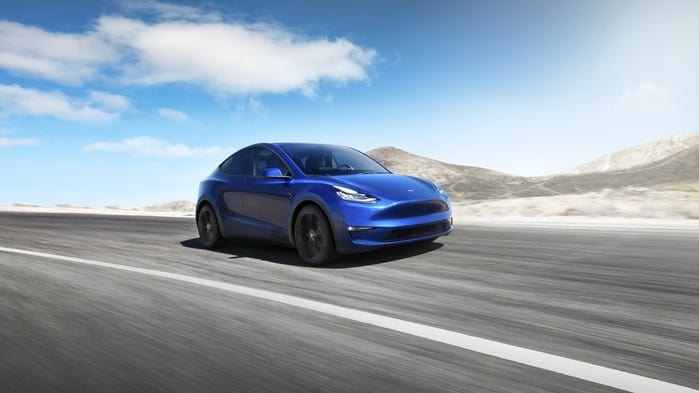This article was originally published on Fool.com. All figures quoted in US dollars unless otherwise stated.
Electric vehicle company Tesla (NASDAQ: TSLA) is known for delivering high-flying returns to investors over the past few years, as it has grown to become the largest player in the industry. But the stock has lost its shine in 2022, shedding 52% of its value year to date.
Some of that decline has strangely occurred in the past month. Despite the Nasdaq-100 technology index rising 6.25% over the past 30 days, Tesla stock has dropped roughly 14% during this period. Investors appear concerned about CEO Elon Musk's focus after his recent $44 billion acquisition of social media giant Twitter, which appears to be occupying much of his attention.
But it shouldn't change Tesla's long-term trajectory, and many analysts on Wall Street remain incredibly bullish on the company. For example, an analyst for Ark Investment Management -- run by famous investor Cathie Wood -- thinks Tesla stock could soar nearly 930% by 2026. But could these impressive projections be right? Let's take a closer look.
Elon Musk is a master multitasker
The Tesla boss has a well-documented history of spreading himself thin, but for the most part, things have worked out exceptionally well. His time is split between the electric vehicle giant; his private rocket-building enterprise, SpaceX; his brain-interfacing project, Neuralink; and the newly acquired Twitter. While it may take some time for him to smooth out the kinks over at Twitter, history suggests the impact on Tesla will be negligible at most.
For example, 10 years ago, Tesla had an annual production rate of about 20,000 electric vehicles. But it has rapidly expanded since then, with two new Gigafactories in Austin and Berlin coming online during 2022. Its capacity has now ballooned to 2 million cars per year. So, despite distractions from Musk's various other enterprises, the company's progress hasn't slowed down.
Tesla has even expanded into other verticals, like software, with a particular focus on its full self-driving (autonomous) technology. This will be a lucrative opportunity not only for customer vehicles, but also the company's upcoming robotaxi, which is slated for release in 2024. The robotaxi is likely to be fully autonomous and might not even feature a steering wheel or pedals. By some estimates, this segment of the car market could be worth upward of $2.1 trillion by 2030.
In fact, the robotaxi business is key to Ark Investment Management's lofty prediction for Tesla stock. The firm believes the segment will make up as much as 62% of the enterprise value of Tesla by 2026, and if that's going to be the case, its growth will have to be rapid from the moment it launches.
Tesla is more than an electric vehicle company
Despite its clear focus on the car industry, Tesla is quietly expanding into other areas. The company offers green energy solutions like solar power and battery storage for residential and commercial purposes, and its most recent quarter (ended Sept. 30) was one of its strongest ever in that department.
Storage deployments jumped by a whopping 62% year over year to 2.1 gigawatt-hours, which was the highest result ever. Remarkably, it came in the face of continued production struggles as Tesla hasn't been able to access an adequate supply of semiconductors. As a result, demand is outstripping supply and the company is in the process of ramping up production at its dedicated Megapack factory in California.
But it gets better. At Tesla's recent artificial intelligence (AI) day, it revealed a new humanoid robot called Optimus. It's far from production-ready, but it could end up being a critical part of low-skill workforces in industries such as manufacturing. Robots don't need to eat, sleep, or take vacations, so the opportunity for around-the-clock production of goods could eventually be a reality.
Tesla thinks Optimus will be deployed into the market in 2027, and prices could start at $20,000. The company intends to produce millions of units following the launch, so the financial contribution from this business segment could be astronomical -- and it's not even factored into Ark's thesis yet.
What Tesla stock needs for a gain of 900% or more by 2026
Tesla has produced 1.2 million cars over the past four quarters, bringing in $74.8 billion in total revenue. That offers some context for Ark's projections below.
In order for Tesla stock to soar more than 900% by 2026, Ark says the company will have to be selling 17 million cars annually with about $1 trillion in revenue. (Note: The initial report by Ark does not account for Tesla's stock split since it predates its occurrence. As such, the possible "900%-plus-gain" has been adjusted to reflect the split alongside Ark's initial price projection). The company has four full years to make that happen (until the end of 2026), but even so, that projection might be somewhat ambitious.
Elon Musk himself has hinted that Tesla's annual production capacity could hit 20 million vehicles -- but not until 2030. It will require another 10 or 12 Gigafactories, and since none of them have been formally announced yet, it's unlikely the company will be so far ahead of schedule that 2026 becomes a likely possibility.
What might be possible for Tesla stock, then? Well, Ark also has a "bear scenario" at the lower end of its forecast. That would involve the EV maker selling 10 million vehicles by 2026, generating about $490 billion in revenue. In other words, it would mark a halfway point to Elon Musk's 2030 projection, and the timing does make sense.
If that scenario comes to fruition, Ark thinks Tesla could rise to $966 per share, representing more than 400% upside. That's still a significant gain from here, and it's a far more likely scenario than the ultra-bullish case.
This article was originally published on Fool.com. All figures quoted in US dollars unless otherwise stated.









